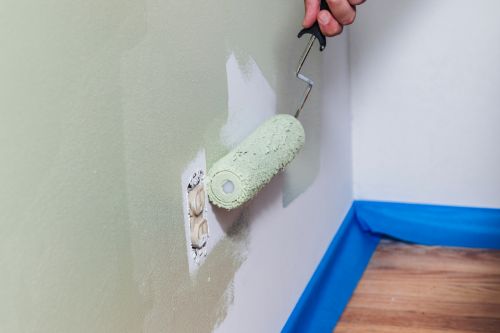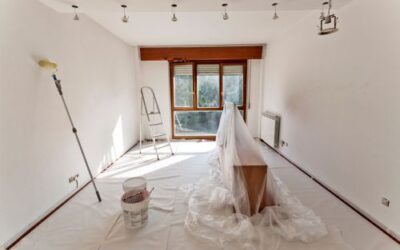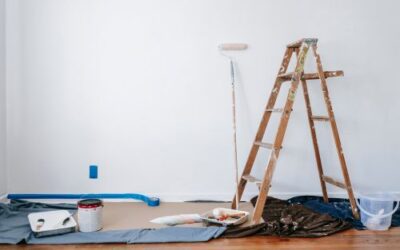Painting a room may seem like a simple task, but without the right preparation it’s easy to end up with splashes on doors, sockets, switches and even skirting boards. If you want a clean, professional finish, we’ve got the best tips to avoid stains and save you headaches.
You can find more similar tips in our interior painting category or learn about other application tricks.
Contact our professionals
Prepare the surface and the environment well
Before opening the paint can, be sure to protect all items that you are not going to paint:
- Remove plugs and switch covers: all you need is a screwdriver. By removing them, you can paint without fear of leaving jagged edges.
- Cover doors and frames with plastic or protective paper and masking tape. Don’t skimp on protection, especially in areas near the roller.
- Protect skirting boards and floors with wide tape and continuous paper or thick plastic.
Use the right tape
Not all masking tape will do. Use quality masking tape that adheres well but will not damage the surface when removed. Apply firmly with your fingers to avoid paint leaks.
An extra tip: if you want clean edges, apply a very thin coat of the same base colour as the surface before painting over it. This seals any gaps in the tape.
Use tools with precision
- Angled brushes: ideal for trimming corners, frames or delicate areas without smudging the surrounding area.
- Small foam rollers: perfect for areas near sockets, windows or doors.
- Anti-spatter trays and grid trays help to control overspray.
Be careful with the amount of paint
Avoid over-wetting the brush or roller. Excess paint causes drips and splashes, especially when working near sockets or frames. Remove the excess with the grid before applying.
Remove the tape at the right time
Don’t wait until the paint is completely dry before removing the tape. Ideally, remove the tape when the paint is slightly damp to the touch, to avoid lifting the painted edge and ruining the line.
Extra tip: plan the order of painting well
Start with the ceiling, then the walls, and leave the details (corners, edges and delicate areas) for last. This will avoid splashes on finished surfaces.
Maintenance after painting
Once the room has been painted, make sure to clean up any tape residue, collect the protective plastic and ventilate properly. If you used water-based paint, you can wash brushes and rollers with warm water and neutral soap to preserve them. A good cleaning at the end allows you to keep your tools ready for the next time.
Result: a renovated room, without stains or touch-ups.
Stain-free painting is possible if you follow a good strategy and use the right materials. With these tips, you’ll achieve a clean, professional, frustration-free finish. And remember: good preparation is everything.
If you’ve found this useful, we invite you to visit our paint application guides section or read more about interior renovations on our blog. Your home deserves the best finish!
Other publications that may interest you
Paint suitable for basements and poorly ventilated rooms
Basements, storerooms or garages have unique conditions: poor ventilation, high humidity and increased risk of mould or condensation. Using conventional paint in these spaces is a common mistake that leads to ephemeral finishes and health problems due to fungi or...
How often should a house be painted depending on its use?
The frequency with which you should paint a house is not always the same. It depends on several factors: the use given to each room, the quality of the paint used, exposure to light or humidity, and even the colour. In this guide we explain how often you should renew...
How to prepare a house for painting without causing chaos and staining
Proper preparation saves time, avoids splashes and allows paint to adhere better. Follow this plan - tested by Bartolomé Bas's team of house painters - and you will achieve an impeccable finish without turning your home into a war zone.Clear and organise the room...




